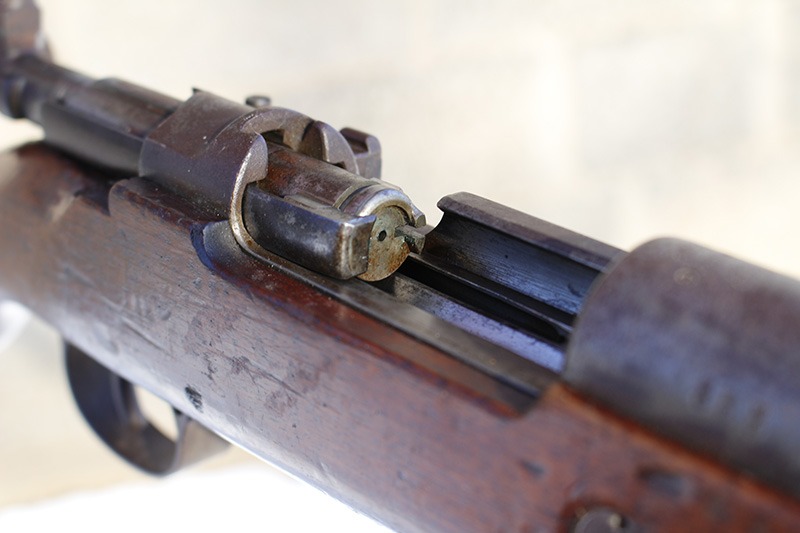A Brief History of the Mauser 98
The 19th century saw many innovative firearms designs, from Sam Colt’s famous single-action revolver to Winchester’s cowboy-favorite lever-action rifles, but one of the most important firearms to make its debut in this era wasn’t from America, but from Germany. You’ve probably seen this firearm referenced in a shooting magazine or book—in fact it’s hard to pick up any literature on firearms today and not see this gun or its action mentioned. I’m talking about Peter Paul Mauser’s Model 98 bolt-action repeating rifle.
Noted for its extremely strong action, the Mauser 98 was the basis for military shoulder arms for the first decades of the 20th century. Utterly reliable and capable of taking on some of the largest dangerous game available, Mauser’s bolt-action repeating rifle soon became a favorite tool for sportsmen. While the lever-action rifle so popular when the Mauser 98 was introduced could offer a slightly faster rate of fire, the capability of firing cartridges with flatter trajectories and greater accuracy gave the edge to Mauser’s bolt-action design (especially when longer shots are concerned).
Most bolt-actions look similar from the outside, but there are many differences in how they are designed and function internally. Mauser’s design, for instance, doesn’t require the use of an internal hammer. (Note: a gun’s “hammer” can be external, like on a revolver, a Colt 1911 semi-auto pistol, and many lever-action rifles, while the majority of repeating shotguns and rifles have internal or “non-exposed” hammers.) The Mauser 98’s “lock time”—the time between the end of the trigger pull and the detonation of the cartridge, something measured in fractions of a second and important to a gun’s accuracy (faster is better)—was much faster than the lever guns so popular when the 98 was introduced. So just how good was the Mauser 98? To give you just one example, Winchester cloned the Mauser 98 when it released its now famous Model 70, and that rifle would go on to earn the moniker “The Rifleman’s Rifle.”
The 98’s action is centered around the bolt. That bolt is operated by a handle on the shooting-hand side of the rifle’s action. In operation, the handle is raised, cocking the action (readying the gun for firing), and the bolt is pulled rearward. This exposes the magazine underneath the bolt. When the bolt is pushed forward, the topmost cartridge in the magazine is picked up by the bolt’s face and pushed in the chamber. On the down stroke of the bolt, the bolt’s two “locking lugs,” located on the front of the bolt, engage a matched set of grooves milled into the breech, thus sealing the breech. These two lugs are central to the Mauser 98 action’s great strength.
After firing the cartridge in a Mauser 98, the shooter would once again lift the bolt handle. This time, though, the action’s huge “extractor” pries the fired cartridge case from the chamber. When the bolt is pulled fully rearward, the case, also being pulled backwards, meets the “ejector,” which kicks that empty case out of the action.

The bolt face of the Mauser 98. Courtesy Phil & Suzie Massaro.
With the Mauser design, the magazine may be a “blind” design, something we didn’t talk about in last month’s discussion on magazines. This means the magazine is an integral part of the gun (i.e., it doesn’t detach as a separate piece like the magazine in your pistol does) and accessible only from the top of the open action. Other Mauser 98s may have a hinged floor plate, which allows the user to release any unfired cartridges from the underside of the rifle. Military designs use the blind variety, while many of the sporting Mausers use a hinged floor plate.
The Mauser 98’s safety is located on top of the rearmost portion of the bolt. It is a thick metal tab that pivots left, center and right, something known as a “three-position safety.” With the safety all the way to the right, the trigger is blocked and the bolt is prevented from moving. With the safety in the center, the trigger is blocked, but the bolt may be operated to safely unload the firearm (necessary for a blind magazine design). When the safety is turned to the left, the rifle is in fire mode and the bolt operates freely.
The Mauser 98 action was an affordable alternative for hunters pursuing the dangerous game of the world, as the rifles could be manufactured at a fraction of the cost of the double-barreled rifles commonly in use for such sport in those days. I have used the Mauser clones—the aforementioned Winchester Model 70, as well as a CZ550 and the Ruger Model 77—to hunt game all over the world, including bear, deer, caribou, antelope, Cape buffalo and bison, in a wide range of temperatures and latitudes. If you study your rifle history, you’ll find that the esteemed British firm of John Rigby and Co. used the Model 98 action exclusively to create its world-famous bolt-action rifles. The 98 action can be made to fire virtually any cartridge smaller than the ridiculously large .600 Nitro Express and .700 Nitro Express, and that is part of its magic, for the Mauser 98 is this gun one of the most easily customized rifles ever made. Take a look at a used gun rack in your favorite gun store next time you’re in—it’s not hard to find a converted and customized Mauser 98. Of course, if you want the real deal, you could also turn to Mauser itself, for the famous German company still makes this gun today. In fact, Mauser’s website will tell you it’s produced more than 100 million Mauser 98s since its inception. Now that’s a gun that’s not only made history, but one that keeps on making it.